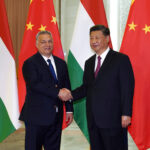‘The summit split opinion on the continent with its focus on market solutions to the climate crisis rather than dealing more directly with its human impacts.’
“The outcome of the summit itself is like a man dying of thirst in the Sahara Desert and being offered only his own urine.” So Mohammed Adow, director of Nairobi-based think tank Power Shift Africa, summarised the inaugural Africa Climate Summit in a post on X (formerly Twitter).
Attending the landmark three-day conference, which wrapped up on Wednesday with the Nairobi Declaration, I was struck by how it split opinion on the continent with its focus on market solutions to the climate crisis rather than dealing more directly with its human impacts.
The fact that Africa suffers disproportionately from the crisis – 17 of the 20 worst-hit countries are located on the continent even though it accounts for less than 4% of global emissions – was prominently repeated at the conference.
Yet, despite over 7 million internal displacements in 2022 alone, and the number of undernourished Africans increasing by nearly half since 2012, issues relating to climate-induced humanitarian crises didn’t feature prominently on the agenda.
The declaration did call for rich countries to invest more in the greening of African economies, as well as to live up to their promises to cut emissions and deliver funds for adaptation.
And in the summit’s panels, many bemoaned the failure by the rich nations to deliver the $100 billion per year promised to the rest in 2009 (by 2030, it is estimated that Africa alone will need $250 billion a year to meaningfully address the impact of the crisis).
There were also calls for the Loss and Damage Fund – agreed to at the 27th Conference of the Parties to the United Nations Framework Convention on Climate Change (COP27) last year in Egypt – to be properly launched and begin its work of helping to build resilience, and of compensating countries and communities for climate-related disasters.
These calls, however, were overshadowed – and even contradicted – by the push to see the climate crisis “through the lens of opportunity”, as Kenyan President William Ruto, the summit’s host, described it.
With many African countries seemingly giving up on hopes that the rich world will achieve emissions targets to limit the rise in global temperatures, solutions at the summit focused on monetising the continent’s natural carbon sinks and seeking investment to secure its own green future.
Talk of loss and damage had led to blindspots, Ruto said. “‘Who did what is not a conversation we can afford to engage in because, when the apocalypse comes, it will come for all humanity,” he told the assembled delegates on the first day of the summit. “We are not here to catalogue grievances but to scrutinise ideas and unlock solutions.”
To some outside the summit, those solutions had an uncomfortably familiar ring. More than 500 civil society organisations had signed an open letter to Ruto claiming the summit agenda had been hijacked and promoted “the position and interests of the West, namely, carbon markets, carbon sequestration and ‘climate positive’ approaches.
“Its lasting legacy may be that it has kickstarted a bigger conversation about climate within a continent used to the external imposition of ideas and impacts from the outside world.”
“These concepts and false solutions are … being marketed as African priorities,” the letter added.
Hundreds of activists from all over the continent staged protests outside the summit and convened their own “Africa People’s Climate Assembly”, which, in the words of Ikal Angelei, an Indigenous activist from Kenya, demanded “a radical shift in how climate change is being addressed”.
While few contest the fact that the continent needs to stem the economic losses from climate change – which amount to between 5% and 15% of GDP annually – the broader and more vital question, according to one official from Kenya’s National Drought Management Agency, is how to respond to the rich world’s intransigence over emissions and prepare for the inevitable consequences.
There was also scepticism over whether the summit’s push for African economic growth driven by “green industrialisation” would benefit all, with many doubting that prosperity will be the answer to ending climate-induced humanitarian crises on the continent.
Would monetising the carbon sequestration effects of African forests and mangroves, sharing green technologies, and allowing for the profitable and responsible mining of its “green” minerals be an African solution to a global problem? Or would it simply be a licence for industrialised nations to pay to pollute? Would putting economic values to its natural assets be the solution to its debt crisis, or rather set the stage for a fresh colonisation?
The summit was convened, in part, to generate a common African position for the upcoming COP28 to be held in the United Arab Emirates in November. However, its lasting legacy may be that it has kickstarted a bigger conversation about climate within a continent used to the external imposition of ideas and impacts from the outside world.
As Adow put it: “the 1st ever African Climate Summit has awoken the sleeping giant that is the African climate movement”. That movement would do well to focus on the humanitarian – and not just economic – needs of the continent.
Source : The New Humanitarian
















